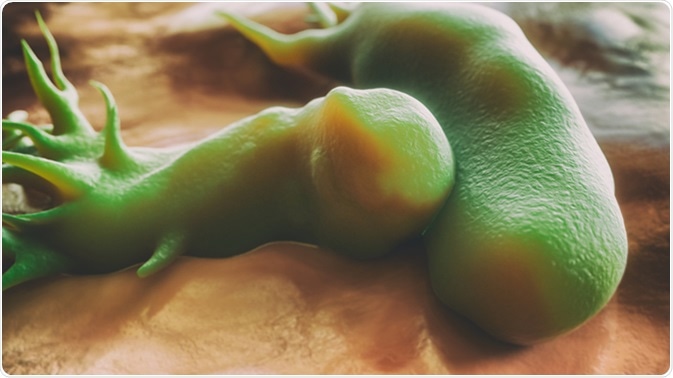Treating and Managing Reactive Arthritis (ReA)

Reactive arthritis (ReA) is a painful inflammatory joint disease. ReA occurs as a reaction to infection caused by a gastrointestinal or genitourinary pathogen such as Chlamydia trachomatis, Campylobacter, Salmonella, Shigella, or Yersinia.

ReA occurs in two main forms – postvenereal type and postenteric type. The postvenereal type is caused by C. trachomatis, whereas the postenteric type is caused by Campylobacter, Salmonella, Shigella, or Yersinia.. These organisms reach the synovium of the affected individual, where a cascade of inflammatory response leads to the initiation of the painful joint symptoms.
Polymerase chain reaction (PCR) analysis has provided vital information regarding the pathophysiology of ReA; however, the exact mechanism by which the interplay between the organism and the host leads to the development of ReA is still unknown.
ReA is famously characterized by the classic triad of symptoms affecting the urethra, conjunctiva, and synovium; however, the triad is absent in the majority of patients. Pain and inflammation are the most commonly reported symptoms.
Examination of clinical features forms the main mode of diagnosis; hence consulting an expert for accurate diagnosis and prompt treatment is an indispensable part of the whole disease management strategy.
The acute cases of ReA are known to resolve spontaneously within a few months; however, most cases are chronic and can cause long-term debilitating effects. Chronic sufferers often exhibit symptoms with a remitting pattern.
What are the treatment options for reactive arthritis?
Reactive arthritis at present has no curative treatment and the current treatment strategy focuses on relieving symptoms. Treatment for ReA is decided after considering the stage of the disease and is based on symptom severity.
NSAIDs – Nonsteroidal anti-inflammatory drugs (NSAIDs) are the drug of choice in the initial acute stage of ReA. NSAIDs are effective in combating pain and suppressing inflammation. As NSAIDs are associated with a plethora of side effects, doctors decide the drug dose after taking into consideration the various patient characteristics.
Disease-modifying antirheumatic drug (DMARD) – Treating the chronic stage of ReA is a therapeutic challenge. The chronic form, if left untreated, can cause permanent joint damage. Disease-modifying antirheumatic drugs (DMARD) are a safe and effective therapeutic option for chronic cases of ReA.
Corticosteroids – Corticosteroid injections may be recommended for relieving severe inflammation associated with ReA. These agents are usually administered as intra-articular injections. As long term steroid use is associated with a number of adverse effects, they are usually prescribed at the lowest effective doses. Topical corticosteroids preparations have less potential side effects and hence can also be used in people affected with ReA. Corticosteroids are also useful for treating the extra-articular features associated with ReA; such as eye inflammation and skin lesions.
Biologics – To treat severe ReA cases, biologics such as tumor necrosis factor (TNF) blockers may be used. By blocking TNF, these agents help in decreasing the inflammation and lowering the immune responses – which are responsible for the various symptoms associated with ReA. However, these medications put patients at risk for severe infections and development of malignancy.
Antibiotics – Antibiotics can be used in patients presenting with active/on-going infections with the causative bacteria.
Self-care
Certain self-care habits can also help to relieve the painful symptoms. Taking rest and avoiding the use of the affected joints can help to relieve symptoms in the initial stage. Regular stretching and strengthening exercises can be initiated as the symptoms improve. Physical therapy under expert supervision is also recommended. Physical therapy can help to avoid muscle wasting and to reduce pain. The use of ice packs, heat pads, splints, heel pads and shoe inserts (insoles) may also help.
Reactive arthritis has a risk of remission if one is exposed to infection a second time. In such cases, protection against sexually transmitted infections (STIs) and bowel infections is warranted. Using barrier method of contraception and maintaining personal hygiene should be a priority to avoid contracting such infections.
Sources
- https://www.ncbi.nlm.nih.gov/books/NBK499831/
- https://www.ncbi.nlm.nih.gov/pmc/articles/PMC3383466/
- https://www.nhs.uk/conditions/reactive-arthritis/treatment/
- https://www.rheumatology.org
Further Reading
- All Reactive Arthritis Content
- What is Reactive Arthritis?
Last Updated: Apr 9, 2019
Source: Read Full Article